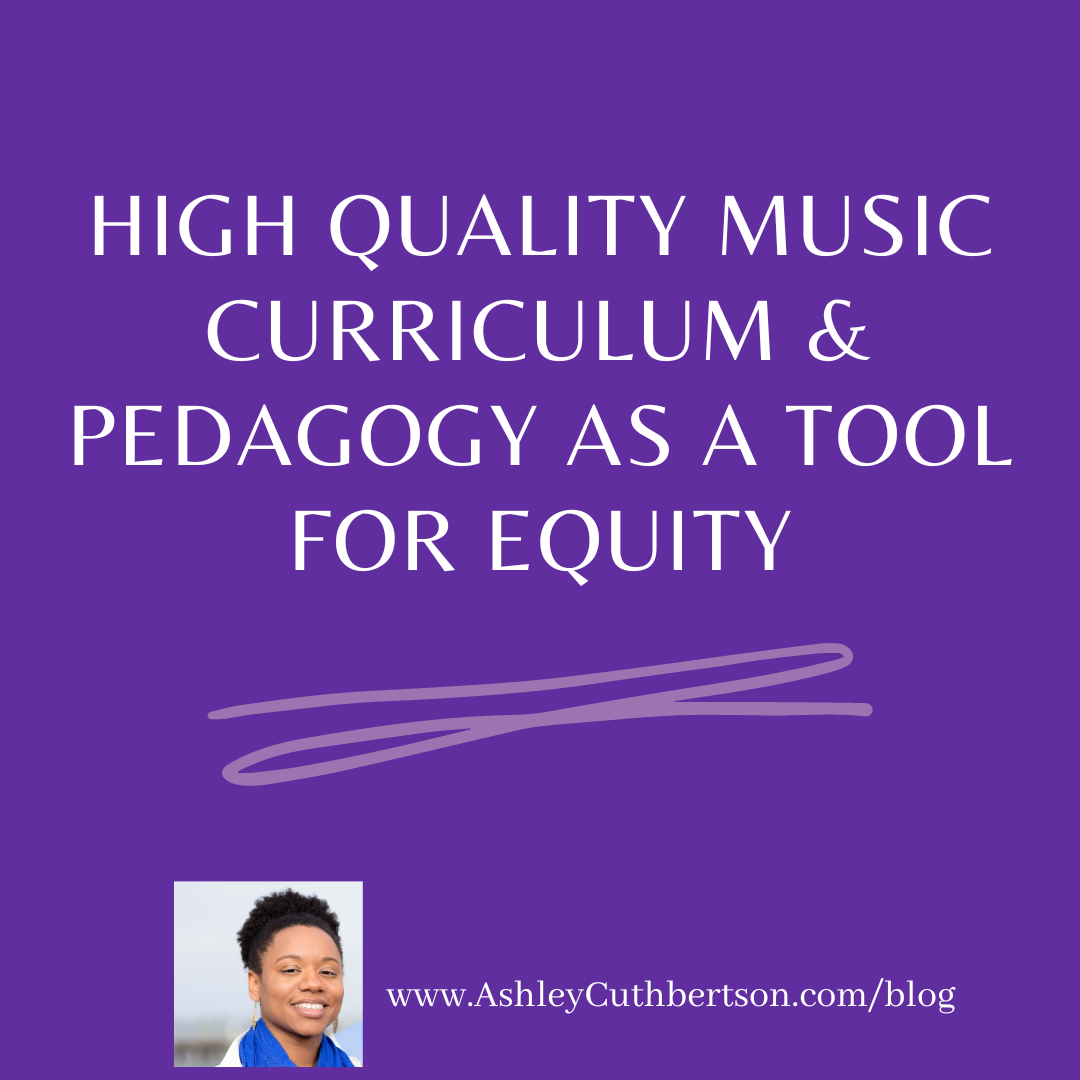Listen to this blog post by clicking the player below!
Music educators committed to working for equity have a similar vision: Music for Everyone.
On the surface, “music for everyone” sounds like a beautiful ideal for our music education spaces, however the question then becomes “how do we actually ensure that music CAN be for everyone?”
In our music education spaces, there are many issues that need to be addressed in order for everyone to have equitable access to music education:
- Addressing barriers to participation in musical ensembles
- Addressing barriers to admission to university and college schools of music
- Addressing the Eurocentric focus in ensemble offerings
- Addressing music educator attitudes and expectations towards students from marginalized backgrounds
- Addressing the lack of diverse musical repertoire resources
- Addressing the lack of on-going professional learning and development of music educators
And I could go on. While all of these issues need to be addressed, I believe that for impactful and lasting change to happen in music education, we need to address equity through high quality music curriculum paired with on-going professional learning for music educators.
Music Curriculum At the Center
Music curriculum is so much more than the repertoire we program for concerts, the musical activities and lessons we engage students in in our classrooms, or what we hope students will learn in a given grade level or ensemble.
Music curriculum design encompasses the repertoire and musical tasks as well as the pedagogical approaches to teaching. The pedagogy in particular is impactful, because how we teach is just as important as what we teach.
Oftentimes as music educators, we get caught up in programming concert repertoire and writing lesson plans and rehearsal plans that we forget that the pedagogy we use to teach has a large impact on how our young musicians experience their music education. Our pedagogy affects whether students are energized or bored, find the music engaging or irrelevant to them, and whether they feel like they belong in music or not. We have to take care to ensure that we do not get so focused on the musical choices (the what), that we forget about attending to developing a great pedagogy (the how).
A high-quality music curriculum then includes:
- A focus on relevant real-world connections and contexts of music making
- Culturally responsive and universally designed pedagogical moves
- Musical materials that provide “mirrors, windows, and sliding glass doors”
High-Quality Music Curriculum & Pedagogy
As mentioned above, curriculum is more than just scope and sequences and lessons plans, those are the “what”, a high-quality music curriculum also calls upon the music educator to strongly attend to the “how” by utilizing pedagogical moves that are culturally responsive and universally designed so that all of our young musicians can thrive.
Because the “how” of teaching, or the pedagogy, is so critical to a high-quality music curriculum, it can’t be taken for granted how important good pedagogy is. In fact, it doesn’t matter how well designed a lesson is if the way that it’s taught is riddled with teacher unconscious bias and disregard for the role that culture and belonging play in our young musicians ability to fully engage at the level necessary to build important understandings and skills.
In our music curriculums, we need to be intentional about how we are embedding culturally responsive and universally designed pedagogical moves into our rehearsals and lessons. Rather than seeing cultural responsiveness as an add on, we can cultivate a sense of belonging as well as engage students in rigorous and relevant musical tasks by designing music curriculum that offers students opportunities to reflect on real-world occurrences of music making and real-world issues that matter to them.
In the process, students are able to practice collaboration, communication, compassion, critical consciousness, and critical thinking skills as they utilize the artistic process to help them make meaning from the music that will serve them way beyond just the time they spend in your music class.
This necessitates that we move away from a “skills only” approach in music education wherein we’re only thinking about teaching a particular piece, technique, or a particular concept, to thinking about music education holistically. A high-quality music curriculum holistically integrates opportunities to build relationships and belonging in the learning tasks themselves, engage in rigorous and engaging musical content that is relevant and connected to the real-world, along with great pedagogy to facilitate it all.
How are you utilizing high quality music curriculum as a tool for equity?
I would love to hear your thoughts on how you’re utilizing a high quality musical curriculum as a tool for equity in your music classroom!
Share below or share on social media and tag me: I’m @ACuthbertson10 on Twitter & Instagram, and @ACuthbertsonConsulting on Facebook.
Also, let me know what you think of this post! If you haven’t already, be sure to sign up for my email newsletter where I send blog posts and other music ed resources and tips each week to help support you ensure all of your young musicians thrive.
Until next time,
Ashley
P.S. Did you like this post? Use the buttons below to share it with a music teacher friend!
